5 Chicago Cubs All-Stars you’ve definitely forgotten about

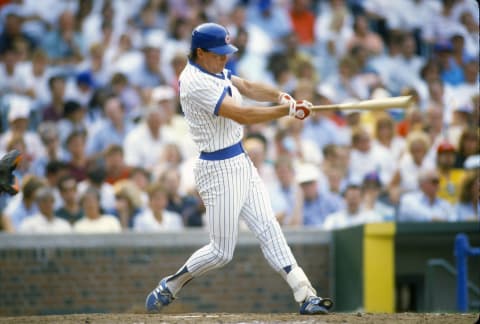
Ernie Banks, Ron Santo, Ryne Sandberg, Kris Bryant, Anthony Rizzo. We all know the big-name Chicago Cubs All-Stars known for carrying the franchise to greatness. These are the guys that were always in consideration and are at the front of our minds when we think of the North Siders’ myriad of All-Star caliber seasons since the inception of the Midsummer Classic in 1933.
What about the random guys that put together a career year for the Cubs and got an All-Star nod for their efforts? Or the once-great players in the twilight of their careers that got one more accolade under their belt in a short stint at the Friendly Confines? Sometimes, all it takes is a really strong first half to earn a permanent little All-Star marker on your Baseball Reference page.
Let’s take a look back at the guys who were celebrated for their moment of greatness while in Chicago, but for one reason or another, don’t stick around in the minds of fans today.
#5: Vance Law’s steady, high average bat earned him a nod in 1988
To put it bluntly, Vance Law is an example of a somewhat unremarkable All-Star player. He had a fine little career for himself complete with 10.6 career WAR over the course of 11 seasons in the majors, but he only hit for a mere 94 OPS+.
Law started his career out in Pittsburgh, but only ever played in a limited capacity in two years with the Pirates. It was with the White Sox that he got his first real crack at the Majors, though his bat left a lot to be desired. Outside of his 1982 campaign in which he hit .281, he lacked any real upside in his bat and left the Sox for the Expos following the 1984 season.
Again, Law didn’t do much, but he actually posted his best season in Montreal with a 266/.369/.405 slash line to give him a solid 122 OPS+. Still, the Expos were done with him after three years and he came to the Cubs in 1988, his first and only All-Star season. Law was actually part of a slew of Cubs All-Stars that year, joining Sandberg, Andre Dawson, Greg Maddux, Shawon Dunston and Rafael Palmeiro in perhaps the most Cubs-centric Midsummer Classic outside of 2016.
Law’s .303/.359/.414 slash line in the first half of 1988 was pretty solid overall, making him a steady fixture in the Cubs lineup. He didn’t light up the world with a flashy power bat, but it was enough to be recognized as one of the better players of the year. He’d go on to play one more year with the Cubs before joining the Chunichi Dragons in 1990 and eventually closing out his career in Oakland in 1991.
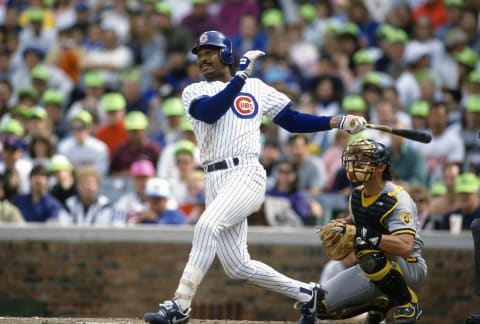
#4: Beloved Blue Jay George Bell gave the Cubs a boost
George Bell is a player that absolutely belongs in a “Cubs legend (insert player here)” tweet. Bell was a Hall of Very Good player that made a name for himself at the heart of the 1980s Blue Jays. His career reached the highest mountaintop in terms of personal accomplishment, winning an MVP in 1987 with a pretty monstrous .308/.352/.605 slash line.
Outside of that MVP campaign, Bell remained a force with the Jays until he eventually joined the Cubs for a single season in 1991. By the time he came to Chicago, Bell was starting to show signs of decline and wasn’t putting up the same power numbers he managed in his brief peak in Toronto. Not to mention he had a pretty public spat with fans and the front office that did a number on his time in Canada.
The Cubs would bring him on a three-year deal and the first year turned out pretty well for the North Siders with Bell slashing a really solid .294/.331/.490 in the first half and earning his third ever All-Star nod. He kept a pretty decent level of production throughout the entire year and finished out with an OPS+ of 117.
Of course, the All-Star nod is probably the least important part of Bell’s abbreviated stay on the North Side. With the Cubs still looking to improve and build a younger core, Bell would be traded to their crosstown rival White Sox following the 1991 season for a little-known player that I’m sure nobody remembers by the name of Sammy Sosa along with Ken Patterson, the guy everyone DEFINITELY knows.
Bell’s All-Star appearance for the Cubs is definitely the footnote in that story and it marked a moment of another franchise’s star getting one last hurrah at the Friendly Confines. Bell would retire after two lackluster years with the Sox, ending a short but fruitful career.
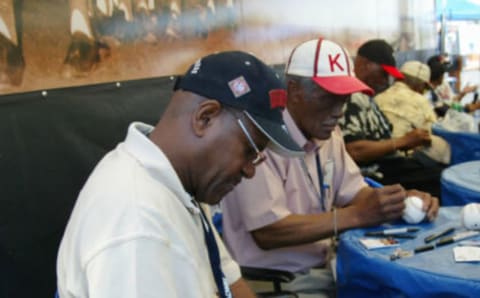
#3: George Altman is an unsung All-Star for the Banks-era Cubs
Coming in as the only player on this list to earn multiple trips to the All-Star Game as a Cub, George Altman is a bit of a forgotten figure during one of the most entertaining eras of Cubs baseball. For two years, Altman could go toe-to-toe with the likes of Banks and Santo and prove himself as a dude worthy of his spot in the heart of that lineup. From 1961 to 1962, it’s fair to even say Altman outplayed both Cubs legends handily, yet he didn’t have near the same sustained success.
Altman made his debut with the Cubs in 1959 at the age of 26, though he didn’t start to see real success in MLB until 1960 when he brought his OPS+ up from a paltry 86 to a respectable 115. Playing alongside the legendary Banks and the up-and-coming Santo, Altman seemed like a solid contributor, but not the star of the show.
Then 1961 happened. Altman had a massive breakout season, taking his slash line up to .303/.353/.560 while leading the league in triples and topping the team in RBI. At the time, Banks was beginning to decline, leaving Altman as the best hitter in the lineup, trumping Banks’ 123 OPS+ with an impressive 138. With Santo still finding his footing in the majors, Altman briefly anchored the offense, earning not one, but two All-Star nods that year.
He followed up his 1961 effort with a slightly worse but still insanely impressive 1962 campaign. What Altman lost in slugging he almost completely gained back in OBP, putting together a .318/.393/.511 slash line in 147 games, good for an OPS+ of 137. That season would mark Altman’s third All-Star nod and the end of his first stint with the Cubs as he would be flipped to the Cardinals at the end of the year.
Altman took a huge step back in St. Louis before cratering after a trade to the New York Mets. He rejoined the Cubs in 1965 and never hit near the meteoric highs of his early days with the team. It’s hard to imagine anyone outshining Banks and Santo in the Cubs lineup, but Altman peaked at just the right time to become a brief and very impressive star in Chicago.
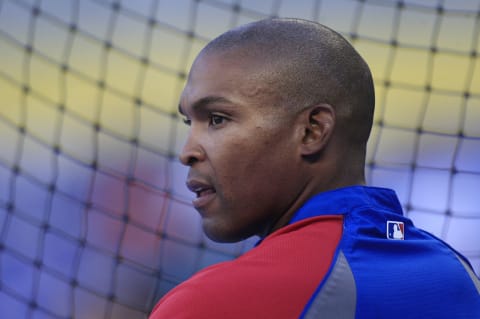
#2: Marlon Byrd was a bright spot on the dismal 2010 Cubs
Consider this entry a crossover with our other forgotten Cubs list. Marlon Byrd had a bit of an interesting career, jumping from team to team while twice being caught with PEDs. Before the busts that ultimately stained his surprisingly solid career as a journeyman, he was the lone glimmer of hope on a sad 2010 Cubs team.
Byrd joined the Cubs in the 2010 season after separate multi-year stints with the Phillies, Nationals and Rangers. It was a bit of a mixed bag for the center fielder at that point, but he had just come off the best few seasons of his career in Texas, averaging an OPS+ of 113 in three years as a Ranger. He came into a somewhat messy situation where the Cubs were just spinning their wheels until their inevitable blow-up by way of Theo Epstein in 2012.
Prior to the All-Star Break, Byrd proved himself as a high average center fielder with a little pop in his bat to boot, slashing .317/.365/.480 and mashing nine home runs. It was enough to earn him a spot in the Midsummer Classic as the lone Cubs representative. Sadly though, Byrd’s production tanked in the second half, but he still ended with pretty respectable numbers regardless.
Byrd stuck around with the Cubs for another full season and saw his numbers dip significantly from his All-Star campaign. When the Epstein regime rolled in, he’d be flipped to Boston as part of the long rebuild process to get the team back to relevance. He’d get cut by the Red Sox and suspended for PEDs for the first time thereafter. This would mark the beginning of his trek around the league where he played with six teams in four years and got busted for PEDs once more for good measure.
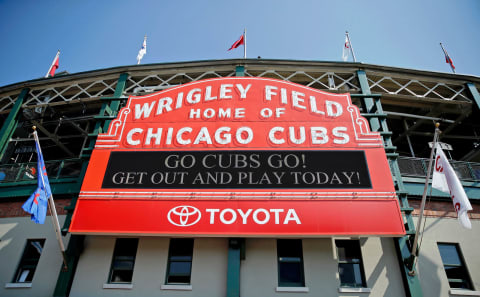
#1: Jerry Morales had a negative career WAR, but a positive season in Chicago
I dare you to find a deeper cut in regards to bizarre Cubs All-Stars than outfielder Jerry Morales. To put in perspective the pure randomness of Morales, a search in Getty yielded ZERO results to put into this article despite him playing throughout the 70s and early 80s. Truly, the man is a mystery.
Morales’ career is also a bit of a mystery by today’s standards. He stuck around in the Major Leagues for 15 years, longer than Law, Bell, and Altman and tying Byrd despite having a career WAR of -2.0. Of those years, he was an above-average offensive player in just four separate seasons, one of which was his lone All-Star nod with the Cubs in 1977.
Funnily enough, “Who’s Jerry Morales?” was the same question posed by the Chicago Tribune when he was acquired from the Padres in 1974. The addition of Morales signaled the end of the old Cubs team featuring Santo, Fergie Jenkins and Glenn Beckert, who was traded for Morales. Already, it was a pretty tough billing for Morales as he was tasked with leading a new, young era of the team ahead of the dismantling of the old, beloved core (sound familiar?)
In his four years with the team, Morales managed to hit around league average and even managed to lead the team in RBIs in 1975. In 1977 though, he’d put up a really strong slash line of .331/.391/.502 in the first half, perhaps the best stretch of his career and a flash of the brilliance some saw in him at the time. He was leading the National League in batting before the break, but like the Cubs were wont to do, he came back to Earth hard in the second half and never found that success again.
Next. Who are the five best starting pitchers in Cubs history?. dark
Every team has its fair share of random All-Stars and the Cubs are no exception. We always talk about the obvious stars and their greatest accomplishments, but it’s nice to occasionally look back and talk about the lesser-known names that still contributed great seasons to the history of the franchise.